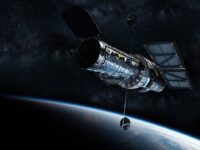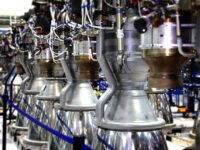You awaken to your Alexa alarm blaring. You ask the virtual assistant for the weather report and a reminder of the day’s appointments. After a quick FaceTime with a friend across the world, you casually scroll past the headline “New SpaceX crew blasts off to International Space Station.”
Only 50 years ago, Stanley Kubrick’s cult classic “2001: A Space Odyssey” ingrained these now-mundane technologies into the public imagination. Life in these decades has been defined by technology firmly entrenched in the screens of science fiction — increasingly tenable AI chatbots, deep-space expeditions, and terraforming projects. Has “2001: A Space Odyssey” accurately portrayed human and technological evolution thus far?
The antagonistic red spot, HAL 9000, is now synonymous with the dystopian risks of artificial intelligence. Operating the spaceship Discovery One’s Jupiter mission, HAL one day malfunctions and descends into murder. He employs modern techniques like computer vision and natural language processing to discover the astronauts’ plan to disconnect him. He personifies general artificial intelligence, which can theoretically replicate individual human consciousness. “2001” was produced at the cusp of the AI boom of the 1960s, after the first ELIZA chatbot. AI experts like Marvin Minsky, the movie’s scientific advisor, predicted that HAL-like intelligence would exist within mere decades.
Clearly, their estimates were overly optimistic. Nonetheless, an explosion in progress blossomed. The first AI mobile robot, Shakey, arrived a year after the movie. Deep learning and big data were major developments, generating social media feeds and predicting protein folding with remarkable accuracy. Deep learning uses multilayered “neural” networks, and models are trained on massive datasets to perform regression, classification, or generation of new data. However, deep learning models often overfit: performing well only on the training dataset but failing when introduced to new data.
At present, the basic mechanisms of consciousness in biological life are not understood or replicable. Fortunately, HAL-type intelligence that can alter its own parameters is likely centuries away. Still, the greatest gift of “2001” was its timeless introduction of AI to the public sphere and inspiration of generations of researchers to come.
Long-term stays on the International Space Station have demonstrated health consequences of microgravity environments like bone and muscle atrophy, which would devastate a longer mission.
The enigma of “2001” is the great monolith — the black rectangular totem which inspires toolmaking and the rise of humanity. It is discovered eons later on the moon and awaits Dave orbiting Jupiter as he completes his odyssey. What secrets does it hold? What is our place out here in the cosmos?
Exploration and the growth of humanity are the beating heart of the film, made possible by its spaceships. Beyond its highly accurate depiction of space itself, “2001” set the standard for science fiction ship design to come: a spacecraft with spinning rings to generate artificial gravity. Just like a spinning carnival ride that pins its riders to the walls, the principle of centrifugal motion can provide similar acceleration as gravity does on Earth.
“2001” was once again overzealous in its deadline, but got artificial gravity’s crucial role in deep space exploration right. Long-term stays on the International Space Station have demonstrated health consequences of microgravity environments like bone and muscle atrophy, which would devastate a longer mission. NASA is now partnering with Blue Origin to centrifuge-ify their New Shepard rocket. Perhaps in a few years, centrifugal spacecrafts will be hurtling into the void in search of answers from the mysterious monoliths.
Beyond the grander visions of human progress in “2001,” its near-Promethean predictions on daily-use technology were equally precise. In August 2011, Apple claimed Samsung infringed on their “unique” tablet design, to which Samsung presented a frame from “2001.” A scientist video calls his daughter from a flat-screen computer display on the orbiting Earth space station. A Pan-American space plane shuttles between Earth station and the lunar colonies — the stuff of dreams of buzzy billionaire space-tourism ventures like Blue Origin and SpaceX. “2001” may have helped inspire entrepreneurs to commercialize space in the first place.
“It occurred to us that for the Greeks the vast stretches of the sea must have had the same sort of mystery and remoteness that space has for our generation,” Kubrick said.
Since the dawn of humanity, technology has been an extension of society. It is an ever-evolving, iterative process that improves understanding of the universe and interactions with it. “2001: A Space Odyssey” posits many questions. Was human evolution unique? What lies beyond the stars? Is synthetic life possible? The film wasn’t completely correct, but as humans and technology evolve together, one day we can venture into the cosmos and attempt to verify its predictions.
Sources:
The Lost Worlds of 2001 (1972). ISBN: 0-283-97903-8
Nature (2018). DOI : 10.1038/d41586-018-05773-y
https://www.theguardian.com/film/2018/apr/02/50-years-of-2001-a-space-odyssey-stanley-kubrick
https://www.wired.com/story/2001-a-space-odyssey-predicted-the-future50-years-ago/
https://www.nasa.gov/mission_pages/station/main/2001_anniversary.html
https://www.computerhistory.org/revolution/artificial-intelligence-robotics/13/289






